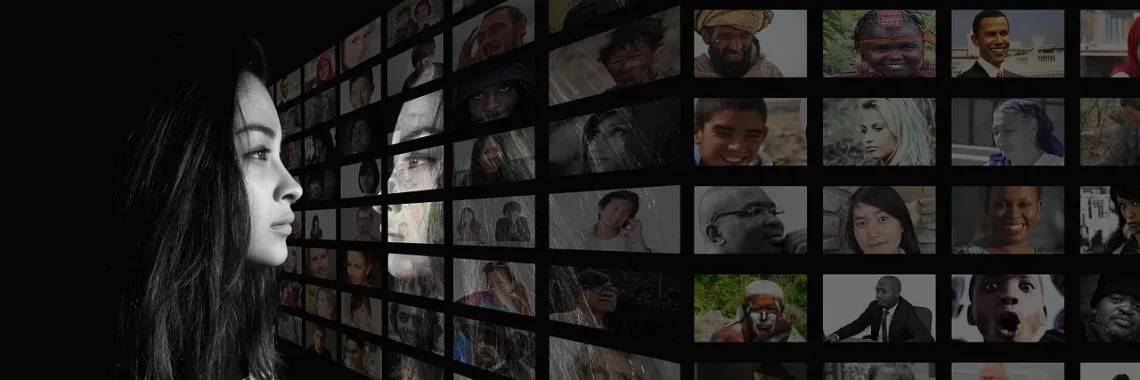
Exploring the Controversial World of Incest Sex Scenes in Media
Exploring the boundaries of human relationships has long been a captivating subject in various forms of media. From literature to film and television, the exploration of taboo subjects often stirs a mix of intrigue, discomfort, and debate among audiences. One such topic that consistently evokes strong reactions is incest, particularly when portrayed in sexual contexts. While many societies maintain strict moral and legal prohibitions against incestuous relationships, media representations challenge these boundaries, providing a lens through which viewers can grapple with complex emotional and social issues.
Incest, as a theme in storytelling, raises questions about family dynamics, power imbalances, and societal norms. It often serves as a vehicle for exploring deeper psychological conflicts, forbidden desires, and the consequences of societal rejection. The portrayal of incestuous relationships can evoke empathy, horror, or a combination of both, often leaving audiences to reflect on their own moral standings. As we delve into this controversial world, it becomes essential to understand the various ways incest is depicted across media, the cultural implications of these representations, and the broader discourse they inspire.
The Evolution of Incest in Literature and Film
The representation of incest can be traced back through centuries of literature, with classic works often addressing the theme in various forms. From Shakespeare’s tragedies to contemporary novels, the motif of forbidden love within families has found its way into the hearts and minds of readers and viewers alike. In classic literature, incest often symbolizes a breaking of societal norms, leading to tragic consequences that serve as cautionary tales. These narratives, while deeply unsettling, provide rich ground for character development and thematic exploration.
As film emerged as a powerful storytelling medium, the portrayal of incest began to evolve. Early films often approached the subject with a sense of taboo, presenting it as something to be feared and avoided. However, as societal attitudes shifted, filmmakers began to explore the complexity of incestuous relationships in a more nuanced manner. Modern films often depict these relationships not merely as deviant but as deeply human experiences fraught with emotional turmoil. This shift reflects broader changes in societal perceptions of love and morality.
Contemporary television series have further pushed the boundaries, presenting incest in various contexts, from dramatic family sagas to dark comedies. Series such as “Game of Thrones” have brought incest to the forefront of popular culture, prompting discussions about power dynamics, privilege, and the consequences of such relationships. The complexity of these portrayals invites audiences to engage with the characters on a level that challenges their preconceived notions of morality and familial loyalty.
While the evolution of incest in media reflects changing societal attitudes, it also raises questions about the implications of normalizing such relationships. Critics argue that frequent portrayals of incest can desensitize audiences, leading to a blurring of moral lines. On the other hand, advocates for honest storytelling assert that these narratives can foster understanding and empathy, allowing viewers to confront their discomfort and engage in meaningful dialogue about taboo subjects.
Psychological Implications of Incestuous Relationships
The psychological complexities surrounding incestuous relationships are profound and multifaceted. These relationships often stem from a variety of factors, including familial dynamics, emotional dependency, and societal pressures. In many cases, individuals involved in incestuous relationships may struggle with issues of identity, self-worth, and societal acceptance. The power dynamics inherent in family structures can complicate these relationships further, leading to coercion or manipulation.
In media portrayals, these psychological tensions are often explored in depth, allowing audiences to witness the inner turmoil of characters grappling with their feelings. For instance, the emotional conflict experienced by individuals in incestuous relationships can serve as a catalyst for character development, driving the narrative forward. This exploration of psychological depth can elicit empathy from viewers, prompting them to consider the complexities of human emotion and desire.
Moreover, the consequences of incestuous relationships can be far-reaching, affecting not only the individuals involved but also the broader family unit. These relationships can lead to feelings of shame, guilt, and isolation, complicating family dynamics and relationships with external communities. Media representations often depict these consequences starkly, illustrating the emotional fallout that can result from breaking societal taboos.
Despite the often-negative portrayal of incest in media, it is essential to recognize that not all representations are purely exploitative. Some narratives aim to shed light on the psychological struggles faced by individuals in these situations, fostering a deeper understanding of the human condition. By addressing the complexities of incestuous relationships, media can spark important conversations about love, desire, and the societal structures that shape our understanding of these concepts.
Cultural Perspectives on Incest in Media
Cultural attitudes toward incest vary significantly across different societies, influencing how it is portrayed in media. In some cultures, incestuous relationships are strictly taboo, governed by laws and social norms that dictate familial boundaries. In contrast, other cultures may have more fluid interpretations of these boundaries, leading to different representations in literature, film, and television.
In Western media, incest is often depicted through a lens of moral outrage, reflecting the prevailing societal norms that stigmatize such relationships. This portrayal can serve to reinforce societal values while simultaneously challenging viewers to confront their discomfort. The tension between acceptance and rejection of incestuous relationships is a recurring theme in Western storytelling, often leading to tragic outcomes for characters involved.
Conversely, in certain cultures, incest may be portrayed more positively or with less stigma. For example, some indigenous cultures have different familial structures and understandings of kinship, leading to varying representations of incest in their narratives. These cultural perspectives can provide valuable insights into the complexities of human relationships and challenge dominant narratives in mainstream media.
Media representations of incest also highlight the power dynamics inherent in different cultural contexts. In patriarchal societies, for instance, incest may be depicted as a means of consolidating power and wealth within families, further complicating the moral implications of these relationships. By examining these cultural differences, audiences can gain a broader understanding of the diverse ways in which incest is perceived and represented across the globe.
Ultimately, the exploration of incest in media serves as a reflection of societal values, moral boundaries, and cultural norms. By engaging with these portrayals, audiences are invited to examine their own beliefs and assumptions about love, family, and the complexities of human relationships.
Ethical Considerations and Representation in Media
The portrayal of incest in media raises several ethical considerations that warrant careful examination. As with any sensitive subject matter, the responsibility of creators to depict incest respectfully and thoughtfully is paramount. Misrepresentation of incest can perpetuate harmful stereotypes, desensitize audiences to real-world consequences, and trivialize the emotional complexities involved in such relationships.
Creators must navigate the fine line between storytelling and exploitation. While exploring taboo subjects can foster meaningful dialogue, it is crucial to approach these narratives with sensitivity and care. This is especially true in genres that may be prone to sensationalism, such as horror or thriller films, where the shock value of incest can overshadow the emotional depth of the story.
Moreover, the potential impact of these portrayals on public perceptions of incest cannot be overlooked. Incest is a complicated and often stigmatized topic, and media representations can influence societal attitudes and beliefs. By portraying incest in a way that emphasizes its psychological and emotional ramifications, creators can contribute to a more nuanced discourse around the subject.
Additionally, the voices of individuals with lived experiences must be included in these narratives. Authentic representation can lead to more informed storytelling that resonates with audiences on a deeper level. By amplifying diverse perspectives, creators can challenge stereotypes and foster empathy, encouraging viewers to engage with the complexities of human relationships in a thoughtful manner.
In conclusion, the portrayal of incest in media is a complex and multifaceted subject that invites ongoing discussion and reflection. As creators continue to explore this taboo topic, the importance of ethical considerations and responsible representation cannot be overstated. By engaging with these narratives thoughtfully, audiences can gain valuable insights into the intricacies of love, desire, and the societal frameworks that shape our understanding of familial relationships.
—
**Disclaimer:** This article is for informational purposes only and should not be considered medical advice. If you have health concerns or questions, please consult a qualified healthcare professional.




